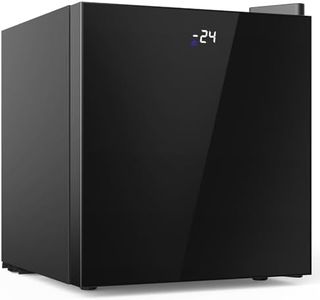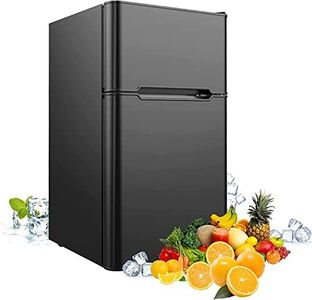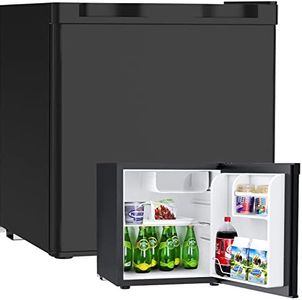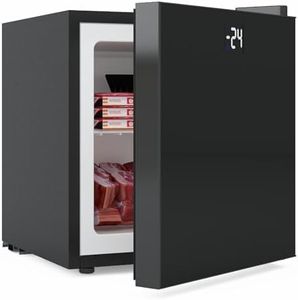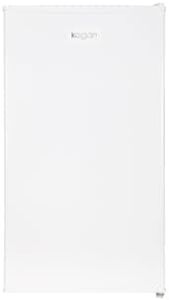We Use CookiesWe use cookies to enhance the security, performance,
functionality and for analytical and promotional activities. By continuing to browse this site you
are agreeing to our privacy policy
10 Best Mini Freezer
From leading brands and best sellers available on the web.Buying Guide for the Best Mini Freezer
Choosing the right mini-freezer involves more than just picking the smallest or cheapest item available. It’s important to consider where you plan to place the freezer, how much storage you need, what you intend to store, and how often you’ll use the appliance. A mini-freezer is ideal for small spaces, offices, dorms, or as an extra freezer at home, so think carefully about your available space and storage requirements before making a decision.Capacity (Liters or Cubic Feet)Capacity indicates how much food and items the mini-freezer can hold, usually measured in liters or cubic feet. It’s important because it determines how much you can store at once. Mini-freezers generally have capacities ranging from about 1 to 5 cubic feet. Smaller models (1-2 cubic feet) are perfect for single individuals or for holding extra frozen snacks and ice, while mid-size (2-3.5 cubic feet) fit more groceries or meal preps for a couple. Larger mini-freezers (4-5 cubic feet) work well for small families or people who like to batch cook or freeze lots of food. Think about how much frozen space you really need and match the capacity to your intended use.
Type (Upright vs Chest)Mini-freezers come in two main types: upright and chest. Upright freezers have a door that opens outward like a refrigerator and are easier to organize, with shelves and spaces allowing quick access. Chest freezers open from the top and offer slightly more usable space for bulky items, but organizing can be harder and retrieving items at the bottom may be inconvenient. Upright models are better if you want organization and quick access, while chest types are best if maximizing space and storing larger items is your priority.
Defrost MethodFreezers typically offer manual or automatic (frost-free) defrosting. Manual defrost models are quieter, more energy efficient, and often less expensive, but require you to periodically turn off and clean out built-up frost. Automatic or frost-free models prevent ice build-up on their own, saving maintenance effort but might be noisier and use slightly more energy. If you prefer low upkeep, automatic defrost is better. If you don’t mind occasional maintenance, manual defrost can work well and may last longer.
Energy EfficiencyEnergy efficiency relates to how much electricity the freezer uses to stay cold. More efficient models cost less to run and are better for the environment. Look for energy-efficient labels or low wattage ratings, especially if you plan to keep the freezer running year-round. If you’re concerned about utility costs or environmental impact, choosing a high-efficiency model is wise.
Temperature Range and ControlThe temperature range refers to how cold the freezer can get, often with an adjustable thermostat. This is important because different foods need different freezing levels for safety and preservation. Some mini-freezers let you set the temperature to suit your needs, while others offer fixed settings. If you want to store a variety of items (like meats, ice cream, or medical supplies), look for a model with adjustable temperature controls.
Noise LevelSome mini-freezers can generate noticeable noise, which can be distracting in quiet environments like bedrooms, studies, or shared living spaces. Noise levels are often measured in decibels (dB), and quieter models are typically rated below 45 dB. If you need to place the freezer in living spaces, look for a low-noise model to ensure it won’t disturb daily life.
Compartments and Organization FeaturesSome mini-freezers include shelves, baskets, or dividers to help you sort and organize contents. These features are important if you have a variety of small items and want to access them easily. If you plan to store a mix of differently shaped items or want to prevent smaller packages from getting lost, choose a model with good internal organization options.
Reversible DoorA reversible door means you can choose which way the freezer door opens—left or right. This feature is important if you have limited space or want the appliance to fit a specific spot, especially next to walls or other furniture. Think about where you’ll place the freezer and whether the door’s opening direction might affect convenience.



